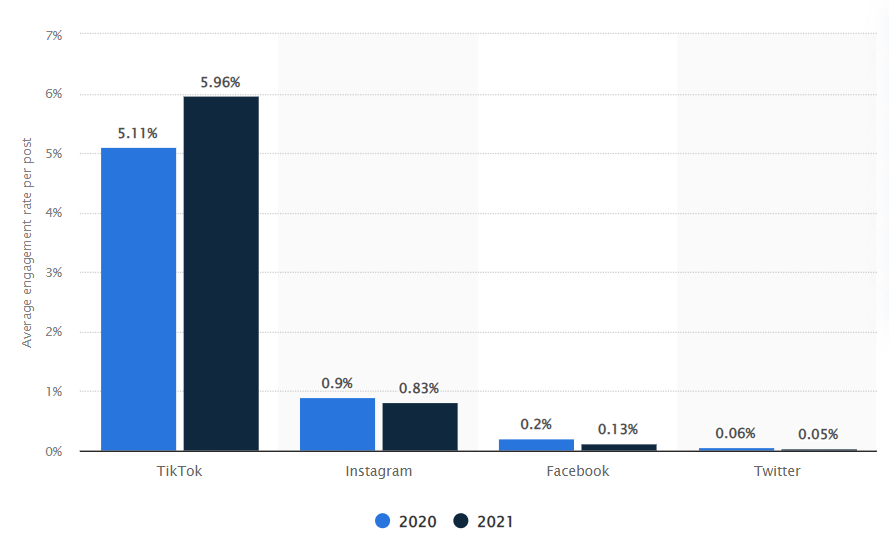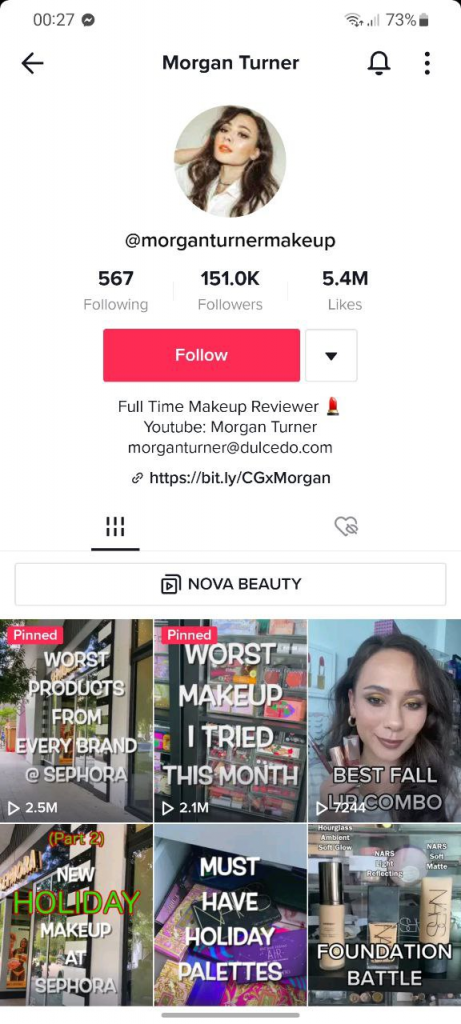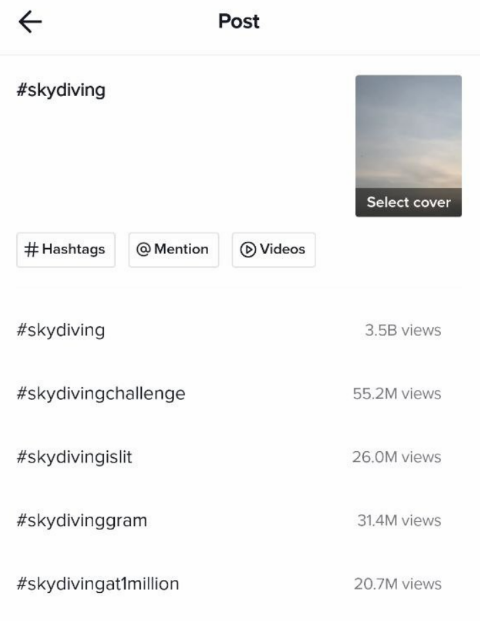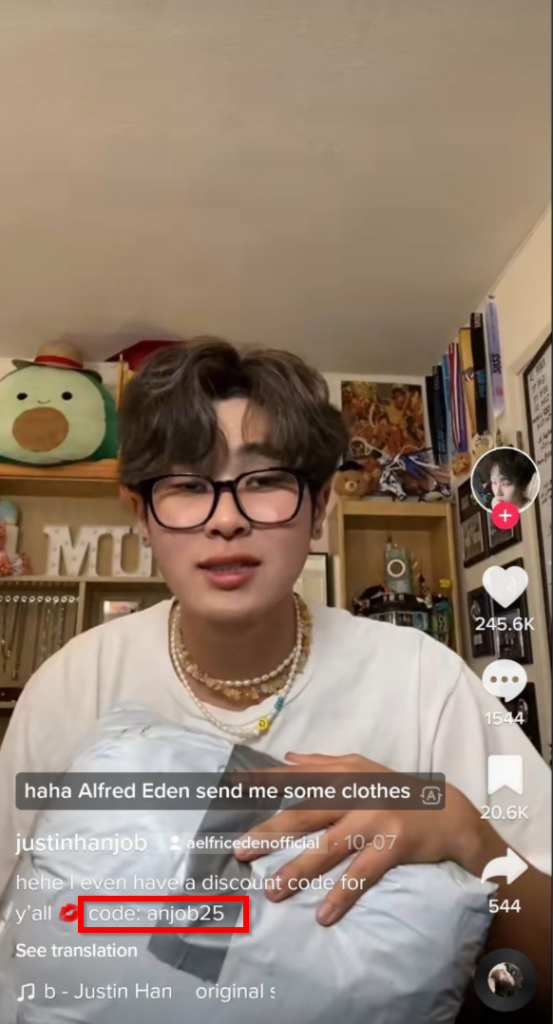TikTok Affiliate Marketing: How to Nail it Step-by-Step
TikTok, while being relatively new in the world of social networks (launched in 2016), has quickly become the center of attention for many of us thanks to the fascinating content creators post on it every day.
But, apart from entertainment, this platform is also a great channel to promote your brand’s products. In this guide, we will talk about one of the approaches to using TikTok as an acquisition channel – affiliate marketing.
How Does TikTok Affiliate Marketing Work?
TikTok affiliate marketing is a strategy for increasing sales for your brand by partnering up with TikTok influencers who promote your products on their channels. In exchange, they receive monetary compensation in the form of sales commissions for each paying customer they refer to your brand’s website.
To better understand the world of affiliate marketing on TikTok, we need to discuss the parties involved in this process.
Stakeholder #1: Merchant
These are the regular businesses that produce goods or provide a service. As any business, they seek to increase their sales revenue and use different marketing channels and tactics to achieve it.
When choosing the path of affiliate marketing, the merchants need to do the following:
Choose the products. As the first step, merchants decide on the products and services they want to promote with affiliate marketing. It is common to focus on the products that have higher profit margins as:
- A higher margin means you can afford to offer lucrative sales commission rates to your affiliates.
- You will also afford to have special discounts on these products that affiliates can use in the promotions.
- You can simply earn more profit from these items.
Start an affiliate program. After selecting the products to promote via affiliate marketing, the merchants need to set up and launch an affiliate program, which should consist of the following:
- The list of products that the merchant wants to promote via this channel.
- The set of eligibility rules for sales commissions. For instance, some programs will pay you a commission for a simple registration on their website, while others will require the user you have referred to make a purchase.
- The sales commission rates. They can be either a flat fee (e.g., $100 per paying customer), a percentage of the purchase (e.g., 20% of the total shopping cart amount), or even a long-term revenue share (e.g., 15% of the subscription fee for the lifetime of the customer).
- A dashboard or management suite where the merchant can manage the partnerships with affiliates and do their commission payouts.
Merchants can build the affiliate program manually (using their internal software development resources), use an affiliate SaaS platform (e.g., Tapfiliate), or join an affiliate network (e.g., ClickBank) that will help both with the program and finding relevant affiliates. You can also use design automation tools such as a logo generator, a landing page builder, etc., to make your program stand out.
Promote the affiliate program. When the program is live, the merchant starts promoting it using various marketing channels available (e.g., SEO and paid ads, email marketing, etc.) or even do cold calls to relevant TikTok creators and offer collaboration.
Track conversions and pay commissions. Once TikTok influencers sign up for the program and start promoting its affiliate offers, the merchant will use unique affiliate links assigned to each creator to keep track of their referrals and pay them commissions based on their performance.
Stakeholder #2: Affiliate
The second player in the affiliate marketing game is the influencer (a.k.a. the affiliate). These are popular TikTok personalities with audiences of various sizes (from several thousand to tens of millions). Some of them specialize in a single niche (e.g., cooking videos, makeup, etc.), while others create TikTok videos of all kinds.
Despite their differences in size and niche, the vast majority of them pursue the same goal – to monetize their channel. Affiliate marketing is one of the ways of doing so, and here are the steps TikTok influencers take to become an affiliate:
Choose the affiliate program. Influencers will either look for affiliate programs manually using Google search or join an affiliate network and let the network’s algorithms find the best programs for them.
Sign up for the affiliate program and get the link. When they find the program they like, influencers can sign up for it, choose the products they want to promote and get an affiliate link with their unique ID.
Promote the products. The next step is straightforward. The creator starts making content where they praise the product and ask their viewers to click on their affiliate link to visit the merchant’s website and purchase it.
Get commissions for paying customers. When the viewers click on the link, open the brand’s website, and buy the product, the merchant uses the unique ID on the affiliate link to determine the name of the influencer who referred this customer and pays them a commission fee.
Stakeholder #3: Affiliate Network
Affiliate networks are platforms that serve as a matchmaker between influencers and merchants.
Although you can successfully run your program without joining an affiliate network, many creators and brands still sign up for them, as these networks come with a variety of benefits, such as:
- The network will automatically find relevant creators or merchants based on your niche, interests, and budget.
- Many networks also come with built-in dashboards for managing payouts, so there is no need to pay extra for an affiliate SaaS service.
- Advanced automation tools let merchants collaborate with tens or even hundreds of affiliates at the same time.
Many networks also come with a rich library of educational resources both for merchants and creators to help them get the most out of their affiliate efforts.
Stakeholder #4: Buyer
Finally, we have the end users of the products that affiliates promote on their channels.
These people either follow the TikTok creator’s channel or stumble upon the influencer’s content on their “For You” page. In both cases, they watch the video where the creator promotes a product, click on the affiliate link that opens the merchant’s website, and make a purchase.
To sum up, affiliate marketing on TikTok is a winning strategy for all sides. Brands get to sell more goods, affiliates can improve the monetization of their audience, and buyers keep finding and purchasing interesting products on TikTok. But let us not limit ourselves here and elaborate more on the benefits of this channel up next.
Why Should You Take Advantage of TikTok Affiliate Marketing?
When discussing the benefits of running affiliate marketing campaigns on TikTok and collaborating with its creators, we should first talk about the social media platform itself.
In particular, we can identify three solid reasons for choosing TikTok – its size, engagement, and content format.
Now let’s break them down one-by-one and get into their details.
TikTok is exploding in popularity. As of September 2021, Statista has estimated TikTok to have around 1 billion monthly active users (with demographics primarily representing Gen Z and Millennials). Here is what its usage statistics look like for the past four years.

If we look closely at this chart, we can also see a steady growth trend (30% in 2021 alone) for this social media platform.
TikTok’s massive popularity allows the merchants to get a sizable organic reach for their products and easily increase both their brand awareness (by promoting their website) and sales revenue.
People are more engaged on TikTok. The second reason for selecting TikTok for your affiliate campaigns is the superior engagement rate of the posts on this platform. Here is another report by Statista that compares the engagement rates of posts for the most popular social media networks.

As we can see, the videos on TikTok can get more than six times the engagement of Instagram posts. In the case of Facebook, the difference is around 30 times.
If we look closely at this chart, we can make another interesting finding. TikTok is the only network among the four presented here that has grown its engagement rate during 2020 and 2021, while the remaining three have lost engagement.
There is a good reason why you should care about this metric, as more engagement translates to better sales performance for the merchants.
Video content performs better. Unlike other social media platforms, where you can post both plain text, images, and videos, TikTok allows you to post short videos only.
We can consider this a benefit as video content tends to perform better compared to images and text, and here are a couple of statistics proving our point:
- Videos have better engagement. If we calculate the number of post shares for videos, it is 12 times higher than the shares of images and text.
- Video is more effective at conveying your message to your target audience as people will remember around 95% of the information in it, compared to only 10% when reading a text.
- Video content is great at convincing users to buy your products. According to OptinMonster, around 84% of consumers have made their buying decision after watching a video about the brand.
To sum up, TikTok has become a great place for affiliate marketing business thanks to its immense popularity and engagement. But the benefits do not end here, as we also need to talk about the advantages of the affiliate marketing model itself.
Many merchants will turn to affiliate marketing because it can bring them high-quality leads, who are likely to convert to paying customers with a high lifetime value. The reasons behind this are the following.
Influencers have relevant audiences. Although we can meet many TikTok influencers who make content related to different niches, they mostly specialize in one specific area of interest. Examples of such niches include hiking, outdoor sports, makeup, travel, and others.
The great side of working with niche creators is that they have an audience that is genuinely interested in that niche. Therefore, when brands collaborate with influencers in a relevant niche, they get to access an audience with matching interests who are very likely to buy their products.
Influencers are authorities in their niche. Another benefit of collaborating with niche creators is that they can influence the buying decisions of their audience. The reason is that these influencers are usually subject matter experts in their niche, and their subscribers are likely to follow their recommendations as they trust the creator’s opinion.
As we can see, affiliate marketing is an excellent choice for both TikTok creators and brands. The first group can easily turn their channel into a source of passive income, while the second group can contribute to their sales revenue.
With the benefits part covered, let us move on and focus on the implementation of your affiliate campaigns and share a couple of handy tips with you.
How to Leverage Your Affiliate Marketing Actions on TikTok
If you have decided to start promoting affiliate products on TikTok, then this section will be of great use to you. Here we have gathered some of the most valuable tips for getting the most out of your TikTok affiliate efforts. We will not talk about the best time to post videos on TikTok, as there is a separate guide on that.
Way #1: Utilize TikTok ads
Creators mostly rely on organic traffic and reach of their videos to promote their affiliate links. However, there is also the option of opening a TikTok business account (which TikTok will continue improving in 2023) and utilizing the native ad platform of TikTok to boost videos containing affiliate promotional content.
Here are the ad formats available for creators and businesses in TikTok:
- TopView ads. These are simple video ads that appear to users when launching the TikTok app on their devices.
- Branded hashtag challenges. With this type of TikTok advertising, you get to select your exclusive hashtag and build your landing page with your logo and description featuring all the videos that the TikTok algorithm has found using your hashtag.
- In-feed videos. This type of ad will appear as a simple full-screen video post on the For You page.
Here is what the in-feed ads look like.

The example above is a dummy ad from TikTok’s help center that showcases the look of the in-feed ad. The only elements that differentiate it from regular user-generated content are the “Sponsored” tag besides the video description and the opportunity to add a CTA button at the bottom of your video that you can use as a lead magnet.
Way #2: Place the affiliate link strategically
Your efforts as an affiliate are worthless if your viewers cannot find your affiliate link and click on it. Therefore, it is important to make your link easy to find.
The downside of TikTok is that you cannot place a link in the video description. Instead, you can consider using the description section of your TikTok profile page to place your affiliate link. This is what it will look like.

This channel belongs to macro-influencer Morgan Turner, who posts content about makeup. When we open her profile page, we can find an affiliate link (shortened with bit.ly) that she has placed at the bottom of her profile description.
Another limitation you have with TikTok is that you cannot place multiple affiliate links in your social profile. But luckily, there is a workaround for this too. There are many specialized services, like Linktree, allowing you to create a single clickable link to place in your bio that takes users to a custom bridge page where you can add all of your affiliate links.
Way #3: Leverage popular hashtags
It is usually a good practice to use popular and trending hashtags in the description of your videos. However, we can safely say that the success of your TikTok marketing strategy heavily relies on them since hashtags are a part of the platform’s algorithm.
Essentially, hashtags get you a better reach, as people looking for content with that hashtag will also watch your video. Apart from that, using a hashtag also ensures that people with relevant interests will find your content.
For instance, if you are posting a video about skydiving and placing #skydiving in it, the people who found your video by searching for that hashtag will be the ones who are interested in that activity.
Luckily, TikTok makes it easy for you to find popular hashtags, as you can see their view count when adding a hashtag in the video description.

As we can see in the screenshot above, the “#skydiving” hashtag is quite popular, with 3.5 billion views.
Way #4: Use discount codes
It is a common practice for merchants to offer coupon codes to their affiliates. Content creators will include these codes in their promotional videos as a way of motivating their audience to buy the merchant’s products.
Influencers will either show this code in the video itself or place it in the video description, like in the example below.
The person featured above is influencer Justin Han, an affiliate of the fashion brand Aelfric Eden. To get more people to use his affiliate URL and buy clothes from this brand, he has shared a discount code with his TikTok audience.
Now Over to You
TikTok is not just a platform where young people post their singing or dancing videos anymore. It has become a highly valuable platform to target with your affiliate campaigns thanks to its immense popularity and great engagement.
Thanks for reading our piece. It is part of a larger series on affiliate and influencer marketing that we have covered extensively at Digital Marketers World. If you would like to explore this topic further, check out related articles on our blog.

Sona Kalantaryan is a senior digital marketer with a creative past. Big fan of high cinema and well-optimized landing pages. She authors guides by sharing the best practices and does it the right way!

